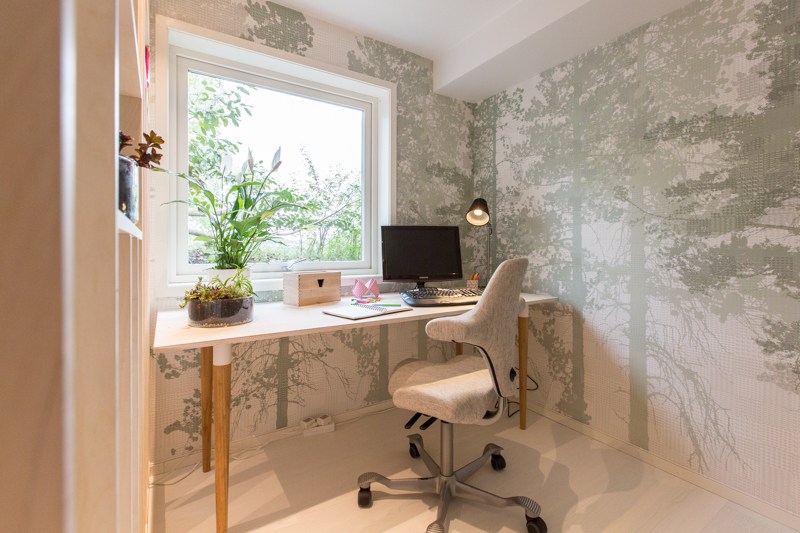The Biophilic Office
The World Health Organisation expects stress-related illnesses such as mental health disorders and cardio-vascular disease to be the two largest contributors to disease by 2020. As 90% of people's lives is spent in buildings, this means the built environment can play a significant part in preventing ill health and promoting a positive approach to health and wellbeing.
Biophilia (meaning a love of nature) focuses on a human’s innate attraction to nature and natural processes. American biologist and researcher Edward O. Wilson introduced and popularised this hypothesis in his book, 'Biophilia' (1984) defining this as 'the urge to affiliate with other forms of life'.
Biophilic design uses these ideas as principles to create a human-centred approach that when applied improves many of the spaces that are lived and worked in today, with numerous benefits to health and wellbeing.
Incorporating direct or indirect elements of nature into the built environment have been demonstrated to reduce stress, blood pressure levels and heart rates, whilst increasing productivity, creativity and self-reported rates of wellbeing.
In May 2017, BRE announced that they are working closely with architect and interior designer Oliver Heath on a project to evaluate the value of biophilic design to the workplace environment. The project consists of a plan to take a tired and aging 1980s office building on the BRE campus and refurbish it according to biophilic design principles.
The project is named The Biophilic Office and will show how quantified improvements in productivity and wellness can bring rewards for landlords, occupiers, developers and all those concerned with the office environment.
Researchers will carry out a year of pre-refurbishment and a year of post-refurbishment monitoring, evaluating the office environment for daylight, lighting, indoor air quality, acoustic, thermal and humidity comfort. Office occupants will undergo a confidential health evaluation, sign up to a series of online questionnaires and surveys and receive wearable technology to monitor key health metrics.
A design strategy will be developed including tiers of interventions in zones within the office. The products used will undergo laboratory evaluation to establish whether a health and wellbeing potential can be quantified at products level.
This article was originally published here on 9 May 2017 by BRE Buzz. It was written by Simon Guy.
--BRE Buzz
[edit] Related articles on Designing Buildings Wiki
- All about wellness.
- BRE Buzz articles on Designing Buildings Wiki.
- Biophilia and building design.
- Biophilic design.
- Biophilic design and sustainability.
- Biophilic design research.
- Biophilic design - why it matters.
- Biophilic gym.
- Building related illness.
- Green infrastructure.
- Health and productivity in sustainable buildings.
- Temple Farm Development.
- Wellbeing.
- Wellbeing and creativity in workplace design - case studies.
- What we know about wellbeing.
- White Collar Factory.
- Wood and healthy office spaces.
Featured articles and news
CIOB and CORBON combine forces
To elevate professional standards in Nigeria’s construction industry.
Amendment to the GB Energy Bill welcomed by ECA
Move prevents nationally-owned energy company from investing in solar panels produced by modern slavery.
Gregor Harvie argues that AI is state-sanctioned theft of IP.
Heat pumps, vehicle chargers and heating appliances must be sold with smart functionality.
Experimental AI housing target help for councils
Experimental AI could help councils meet housing targets by digitising records.
New-style degrees set for reformed ARB accreditation
Following the ARB Tomorrow's Architects competency outcomes for Architects.
BSRIA Occupant Wellbeing survey BOW
Occupant satisfaction and wellbeing tool inc. physical environment, indoor facilities, functionality and accessibility.
Preserving, waterproofing and decorating buildings.
Many resources for visitors aswell as new features for members.
Using technology to empower communities
The Community data platform; capturing the DNA of a place and fostering participation, for better design.
Heat pump and wind turbine sound calculations for PDRs
MCS publish updated sound calculation standards for permitted development installations.
Homes England creates largest housing-led site in the North
Successful, 34 hectare land acquisition with the residential allocation now completed.
Scottish apprenticeship training proposals
General support although better accountability and transparency is sought.
The history of building regulations
A story of belated action in response to crisis.
Moisture, fire safety and emerging trends in living walls
How wet is your wall?
Current policy explained and newly published consultation by the UK and Welsh Governments.
British architecture 1919–39. Book review.
Conservation of listed prefabs in Moseley.
Energy industry calls for urgent reform.




























Comments